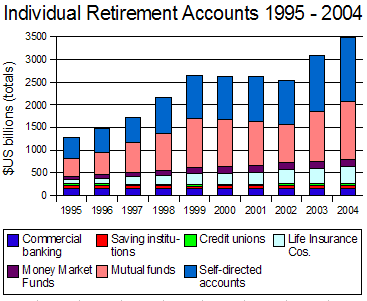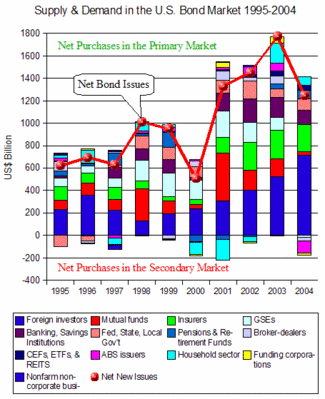U.S. Households Hold Over $3.4 Trillion in IRAs : 2004
by John Schroy filed under Individual Investors
American households, as of December 2004, had accumulated $3,475.1 billion in tax-deferred Individual Retirement Accounts (IRAs), according to the Federal Reserve Flow of Funds Accounts.
The largest portion of these savings were held as “self-directed accounts”, in which a wide diversity of investment are permissible (according to Equity Trust Company), such as:
- Real Estate (apartments, single-family homes, and duplexes);
- Commercial property, developed or undeveloped land;
- Mortgages or Deeds of Trust;
- Publicly traded stocks, bonds, and mutual funds;
- Private limited partnerships;
- Private stock offerings, private placements;
- Private limited liability companies;
- Secured and unsecured notes;
- Judgments, Structured Settlements;
- Tax Sale Certificates;
- Car Paper;
- Factoring;
- Accounts Receivable;
- Commercial Paper; and
- Equipment Leasing.
The graph shows the distribution of individual retirement accounts, by type of custodian:
 Growth of IRA Accounts
|
||



